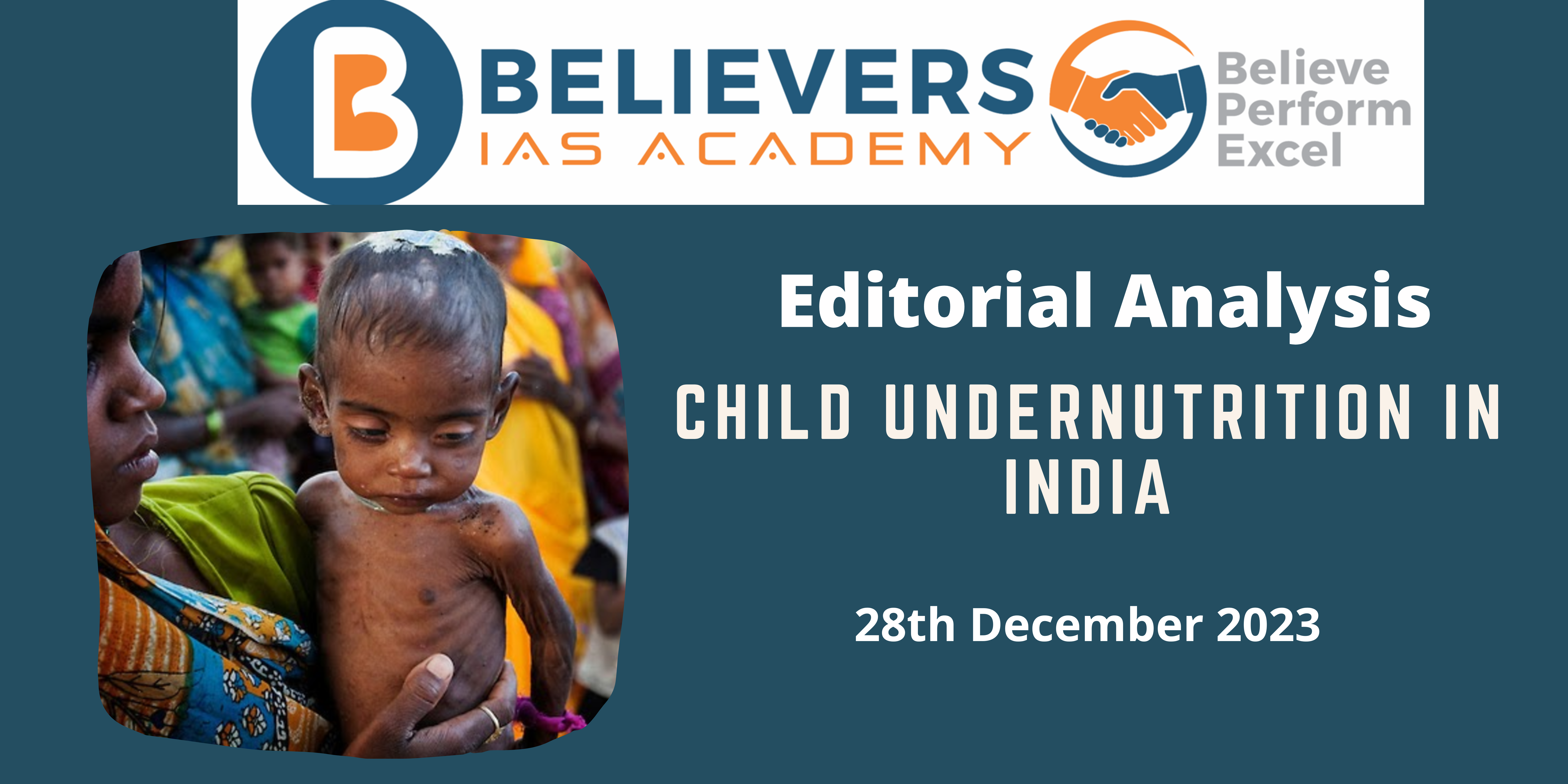Child Undernutrition in India
Context:
Child undernutrition remains a persistent challenge in India, with determinants ranging from food intake to socio-economic factors. The commonly used measures include height-for-age (stunting) and weight-for-height (wasting), tracked through World Health Organization (WHO) Growth Standards. However, debates have emerged regarding the applicability of these standards in India, touching upon issues like sample representation and genetic growth potential. This analysis on the article- “Growth charts — WHO standards versus India crafted”, delves into these concerns, emphasizing the need for precision in understanding child growth for effective policy implementation.
Relevance:
GS-02 (Health)
Mains question:
- Critically evaluate the debates surrounding the use of WHO Growth Standards in India and discuss the challenges posed by sample representation, genetic growth potential, and concerns of overfeeding. (250 words)
Dimensions of the Article:
- Debates on WHO Growth Standards in India
- Addressing Gaps and Concerns
- ICMR’s Recommendations and Future Perspectives
Debates on WHO Growth Standards in India
- Basis of WHO Standards: The WHO Growth Standards, derived from the Multicentre Growth Reference Study (MGRS), were established between 1997 and 2003 across six countries, including India. While considered globally accepted, concerns have been raised about the representativeness of the Indian sample. The MGRS sample, drawn from privileged households in South Delhi, may not align with the socio-economic diversity prevalent in large-scale surveys like the National Family Health Survey (NFHS)-5.
- Sampling Challenges: Comparisons suggesting overestimation of undernutrition by WHO standards are criticized for not accounting for the MGRS’s prescriptive approach and unique sampling conditions. Large-scale surveys struggle to replicate the MGRS’s stringent criteria for a favorable growth environment, making valid comparisons challenging. Socio-economic disparities and underrepresentation of the affluent further complicate sample alignment.
- Genetic Growth and Maternal Influence: Genetic growth potential and maternal height play crucial roles in child growth. While maternal height is a non-modifiable factor, it also reflects intergenerational transmission of poverty. The standards’ plasticity and appropriateness for India’s diverse genetic pool and maternal heights are debated. However, the varying stunting prevalence among Indian states indicates regional differences that go beyond genetic factors.
- Concerns of Overfeeding: An unintended consequence of high standards is the potential misdiagnosis leading to overfeeding and increased rates of overweight and obesity. This concern aligns with the rising burden of non-communicable diseases in India. However, the pressing issue of dietary gaps in children, along with suboptimal coverage of nutritional schemes, diminishes fears of overfeeding.
Addressing Gaps and Concerns
- Dietary Improvements and Policy Implementation: Focusing on dietary quality, nutritional schemes must enhance meal content, incorporating diverse nutrients to prevent overreliance on cereals. Urgent actions include incorporating eggs into children’s meals and including pulses in the Public Distribution System. Holistic interventions addressing sanitation, healthcare access, and childcare services are crucial for comprehensive nutritional outcomes.
- Distal Determinants of Stunting: Recognizing that stunting reflects broader issues like livelihoods, poverty, education access, and women’s empowerment underscores the need for comprehensive development strategies. Equitable resource distribution and interventions in these areas are pivotal for sustained progress, emphasizing the significance of anthropometric indicators.
- Importance of Summary Indicators: Despite individual variations, summary indicators like stunting offer valuable insights into population trends. Trained health professionals can exercise judgment in interpreting growth charts for individual care. The standards primarily serve to comprehend population trends, enabling international and intra-country comparisons. Any deviation from global standards risks losing these comparative advantages.
ICMR’s Recommendations and Future Perspectives
- Committee on Growth References: The Indian Council of Medical Research (ICMR) has formed a committee to revisit growth references for India. Recommendations include conducting a thorough study nationwide to create national growth charts if deemed necessary. While embracing precision is commendable, maintaining adherence to WHO-MGRS standards for international comparability is emphasized.
- Balancing Aspirations and Achievability: Striving for high but achievable standards aligns with the WHO-MGRS framework, balancing aspirations with practicality. The ICMR’s pursuit of more precise data acknowledges the significance of comparability but must ensure that revised standards align with global benchmarks.




